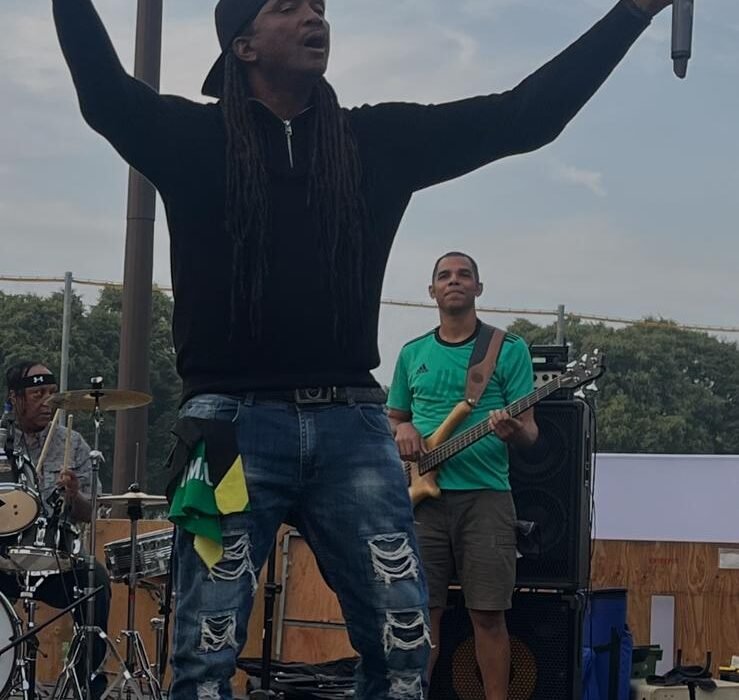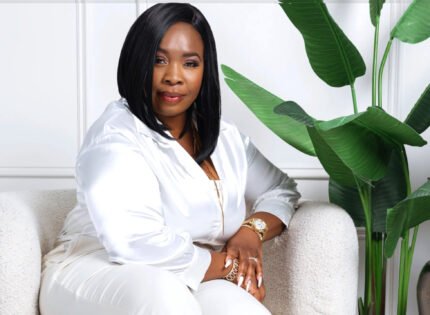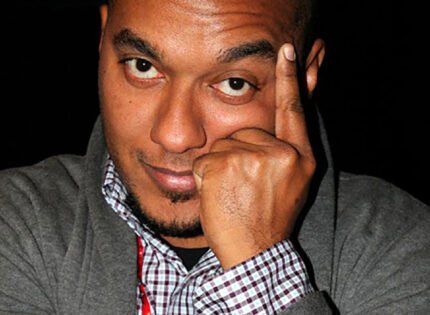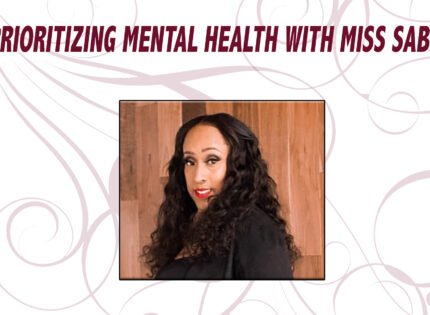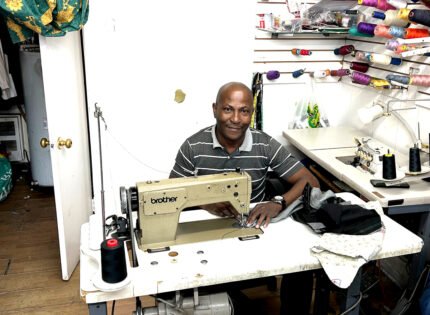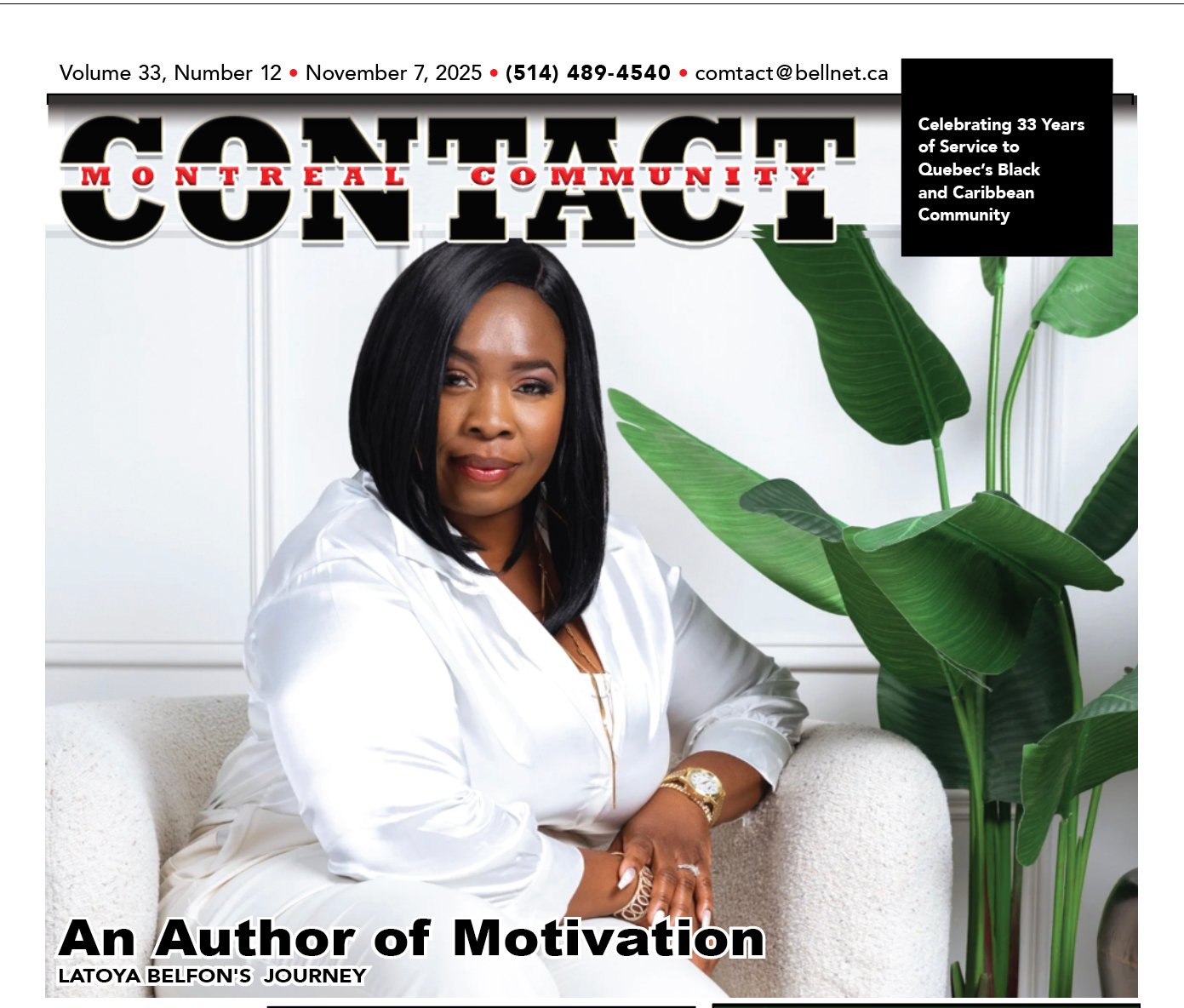Montrealers turned out in full force on July 26th for Jamaica Day at Martin Luther King (Kent) Park, widely regarded by organizers as the largest edition to date. Headliner Papa Michigan best known as half of Michigan & Smiley gave his fans his classic hits on Saturday, then met fans at a packed community gathering on Sunday.
Born Anthony Fairclough in Kingston, Jamaica, Michigan helped invent a new language for reggae at the turn of the 1980s. As Michigan & Smiley, he and partner General Smiley were among the first dual toasters, popularizing a crisp call-and-response style that bridged singing and DJ chatting and helped define the first wave of dancehall.
Michigan explained that the performance bug bit early. “At a tender age I realized I had the gift,” he recalled. “My family would give me money and cookies because they saw I loved to perform.” As a teen he soaked up Jamaica’s sound-system culture. One night, he says, he slipped out from army cadet camp to catch Jack Ruby, watched the DJ “mash up the place,” and thought: I can do that. Soon he was hanging around local sets, Echo Tone among them testing lyrics and finding his voice.
That voice wouldn’t sit neatly in just one box. “I’m not a singer and I’m not a DJ,” he joked, smiling. “I’m a Sing Jay – in between the two.” The description fits a career built on harmony hooks, quick-fire rhymes, and smart wordplay.
A classmate introduced him to General Smiley, and the chemistry clicked. At Studio One with producer Clement “Coxsone” Dodd, the duo scored with the era-defining “Rub-A-Dub Style” and “Nice Up the Dance.” The records rode classic Studio One rhythms (“Vanity” and “Real Rock,” respectively) and stamped the pair’s call-and-response template on dancehall. As Michigan puts it, he learned to turn simple ideas into hooks: “I brought the song with four lines and said, Let’s reverse it.” That economy of words—set against classic riddims—helped define their early recordings and laid the groundwork for a wave of sing-jay performers.
By 1982, producer Henry “Junjo” Lawes brought them into his Volcano camp, where they cut their biggest anthem, “Diseases,” voiced on the “Mad Mad” riddim a horn motif first recorded at Studio One and later so associated with “Diseases” that selectors still call it the “Diseases riddim.” The track became a touchstone that echoed through later dancehall and hip-hop, from Yellowman’s “Zungguzungguguzungguzeng” to samples across decades.
Along the way came albums and festival moments: Rub-A-Dub Style, Downpression, a Reggae Sunsplash set with Eek-A-Mouse and a lexicon of phrases (“nice up the dance!”) that migrated from records to everyday patter.
Four decades on, Michigan hasn’t parked the mic. In recent years he’s released the DJ Legend EP/album cycle and videos such as “High Grade,” keeping his pen sharp while touring and mentoring. “It’s all about going back to basics foundation style,” he’s said of the project.
Fresh off shows in New England, Michigan arrived in Montreal buzzing. “I just came from Maine… Massachusetts,” he said laughing about a 90-minute set that left a room of mostly white fans roaring. “If them love the show so much,” he said, “can you imagine when we come to my own?” He was right: the Jamaica Day crowd sang the hooks, flashed flags, and answered every call-and-response like it was 1979 all over again.
The next day, at the Jamaica Association, he met fans, posed for photos, and swapped stories about Kingston dancehalls, Studio One discipline, and the thin line he’s always walked between crooning and chatting. Montreal’s Caribbean community answered with gratitude another reminder that foundation artists aren’t just nostalgia; they’re living maps of how our music and culture weaved itself into the world.



